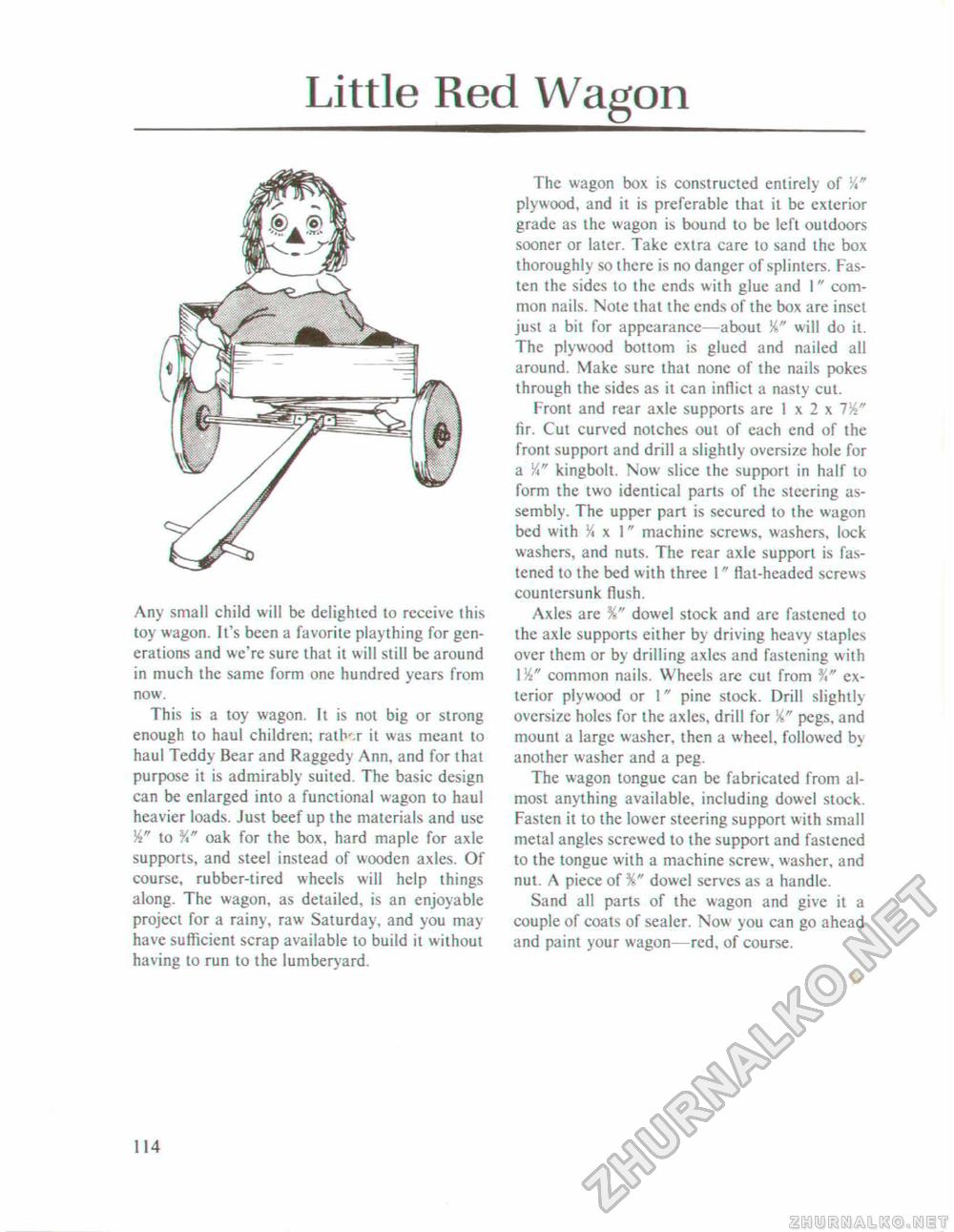Woodworker's Journal 101-Projects-for-Woodworkers, страница 121
Little Red WagonAny small child will be delighted to receive this toy wagon. It's been a favorite plaything for generations and we're sure that it will still be around in much the same form one hundred years from now. This is a toy wagon. It is not big or strong enough to haul children; ratb'.r it was meant to haul Teddy Bear and Raggedy Ann, and for that purpose it is admirably suited. The basic design can be enlarged into a functional wagon to haul heavier loads. Just beef up the materials and use 14" to %" oak for the box. hard maple for axle supports, and steel instead of wooden axles. Of course, rubber-tired wheels will help things along. The wagon, as detailed, is an enjoyable project for a rainy, raw Saturday, and you may have sufficient scrap available to build it without having to run to the lumberyard. The wagon box is constructed entirely of plywood, and it is preferable that it be exterior grade as the wagon is bound to be left outdoors sooner or later. Take extra care to sand the box thoroughly so there is no danger of splinters. Fasten the sides to the ends with glue and 1" common nails. Note that the ends of the box are inset just a bit for appearance—about %" will do it. The plywood bottom is glued and nailed all around. Make sure that none of the nails pokes through the sides as it can inflict a nasty cut. Front and rear axle supports are 1 x 2 x 7X/' fir. Cut curved notches out of each end of the front support and drill a slightly oversize hole for a K" kingbolt. Now slice the support in half to form the two identical parts of the steering assembly. The upper part is secured to the wagon bed with Y* x 1" machine screws, washers, lock washers, and nuts. The rear axle support is fastened to the bed with three 1" flat-headed screws countersunk flush. Axles are %" dowel stock and arc fastened to the axle supports either by driving heavy staples over them or by drilling axles and faslcning with l%" common nails. Wheels arc cut from %" exterior plywood or 1" pine stock. Drill slightly oversize holes for the axles, drill for %" pegs, and mount a large washer, then a wheel, followed by another washer and a peg. The wagon tongue can be fabricated from almost anything available, including dowel stock. Fasten it to the lower steering support with small metal angles screwed to the support and fastened to the tongue with a machine screw, washer, and nut. A piece of %" dowel serves as a handle- Sand all parts of the wagon and give it a couple of coats of sealer. Now you can go ahead and paint your wagon—red, of course. 114 |








